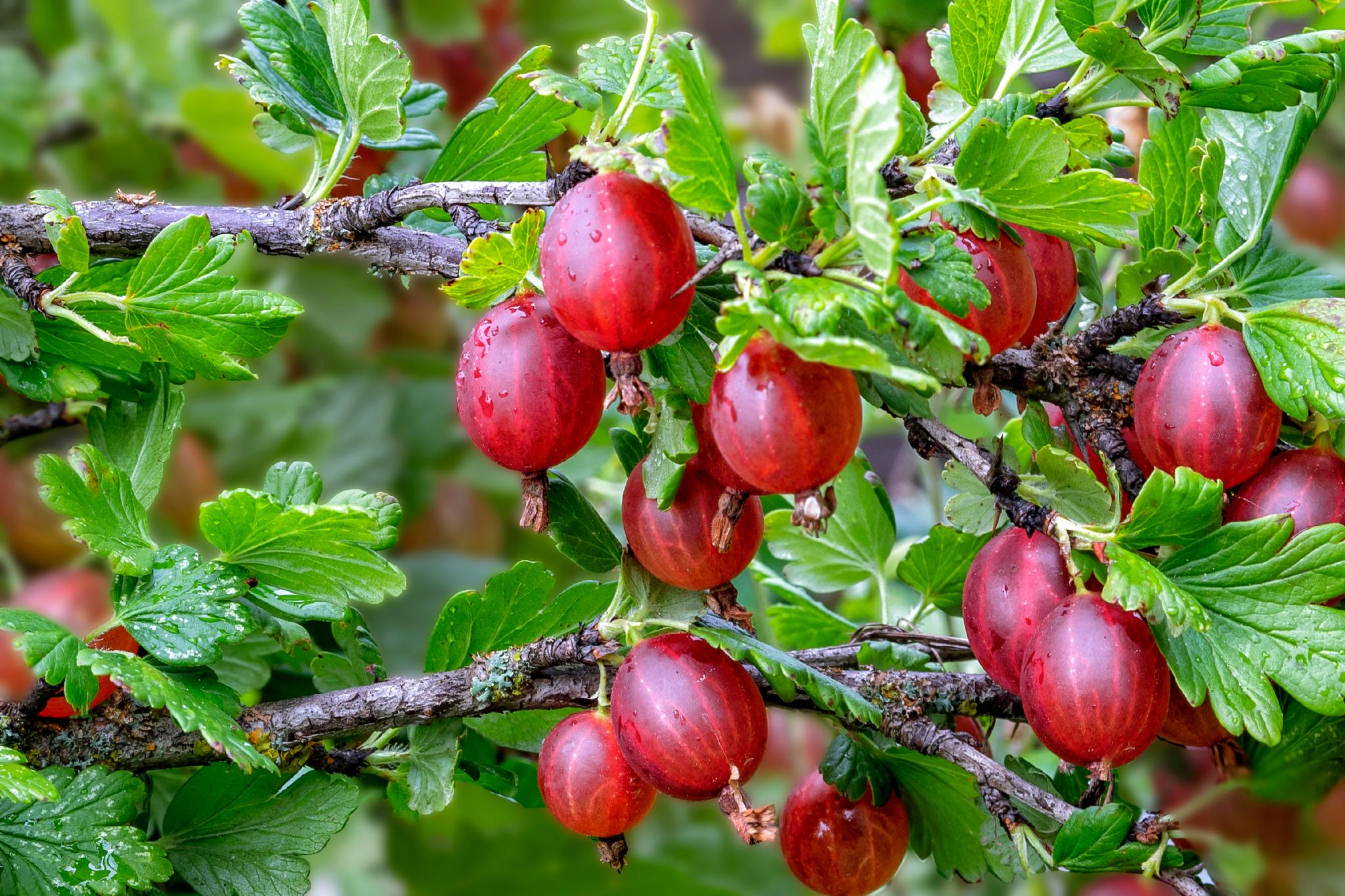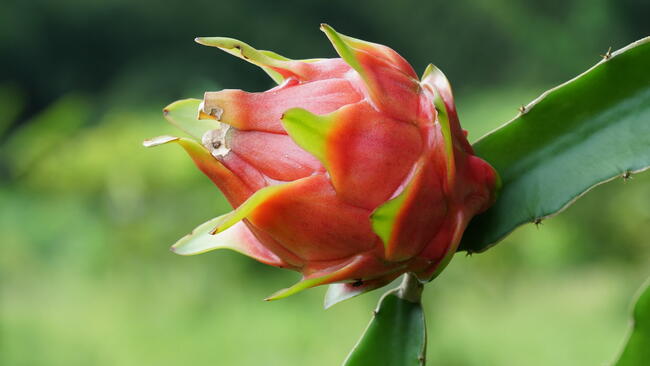
Photo Credit
G. Tatiana/SS
Subhead
Planting, Growing, and Harvesting Gooseberries for a Sweet and Tangy Treat
Read Next
Types
Some varieties are virtually thornless, and it’s important to choose a variety that is resistant to disease, mildew, and pests.
Here are several of the gooseberry varieties that grow in North America.
- ‘Oregon Champion’ produces medium-size to large yellow-green berries that work well for processing; canes are thornless; 3 to 5 feet tall; hardy in Zones 3 to 8; quite resistant to powdery mildew.
- ‘Poorman’ is dessert quality; it’s very productive, with red-fruited, flavorful, large fruit, and is the best variety for the home garden. It has been bred to be particularly cold-hardy, even for a gooseberry (Zones 4 to 6); canes have very few/small thorns; 3 to 4 feet tall; resistant to powdery mildew.
- ‘Pixwell’ is sold most often; it’s very productive and hardy, though fruit is of average quality and best if harvested slightly underripe; small to medium-size light green berries mature to a soft pink; 3- to 4-foot-tall bush; hardy in Zones 4 to 6; bears thorns, which make it difficult to pick.
Gardening Products
Recipes
Cooking Notes
- Underripe fruit is ideal for cooking; mature berries are sweeter and larger.
- If making preserves, harvest gooseberries before they are completely ripe—the natural pectin levels will be higher.
- Gooseberries make excellent wine.
More Like This
As a child growing up in Brooklyn, I enjoyed snacking on the gooseberries and their cousins, currentberries that my father grew in our garden. After moving to New Jersey I was disappointed to discover that they were prohibited in the state. Apparently they can carry the white pine rust blister virus.
My gooseberry bush leaves have been turning into a sickly darker green color. It's been really hot so I've been trying to keep them watered. The leaves will dry out and die over days.
We're trying to understand what you're seeing. Gooseberry bush leaves are supposed to be dark green in color. If leaves dry out, they could be getting too much sunburn. This bush needs bright, indirect light. In terms of water, both overwatering and underwatering can lead to leaf drop. The top inch of soil should feel dry before you give it another drink.
Please correct your article - Oregon Champion Gooseberries are NOT thornless. They are absolutely delicious, super prolific even in the first year, and far better at fighting off aphids than other varieties, but they are - like most gooseberries - hell to pick because of their 1/2” or longer thorns. Wear gloves!
you have not mentioned anything about star gooseberries and indian green gooseberries. can you throw some light on these plants too as they have multiple health benefits
Neither of those are true gooseberries (kind of like how a ground cherry is not related to the cherry family), which is why it’s not in here. Gooseberries are members of the Ribes (currant) family, the two you mentioned are not. :)
I thought I would indulge myself and plant a row of different kinds of gooseberries and one of currants -- about 18 bushes in all.
It turned out that the currant sawfly infestation is so bad every year that I have to pull all of the plants out. Since planting them in 2019 (or even earlier?), I have not been able to enjoy even one bowl of gooseberries. Pretty much every single berry has had a currant sawfly larva in it. Added protein, I know, but not very appetizing.
I had no idea that this could even be a problem. I feel terrible -- I waited to long for them to start producing, and then when I noticed the problem, I invested a lot of time and energy into trying prevent the sawflies from taking over, including putting row cover on them, kaolin, picking off the adorable green worms and feeding them to my neighbors' chickens... And all for naught.
But apparently I just have bad luck. When researching the matter, I read that someone here locally (I live on Puget Sound in Washington State) had such a bad infestation of currant sawflies that he had to rip out all his plants, but that just a couple of miles away his friend had no problem with his bushes.
I thought about giving away the bushes to someone who lives elsewhere, but wondered whether really it was safe, even if I get all the dirt off -- my master gardener friend confirmed my fear: she said it is best to destroy them, since the risk would be too great that I would spread the sawflies even farther.
I assume that my problem might have to do with the fact that I have native currants as well. In any case, I was surprised that the Almanac article didn't mention a word about the devastating currant sawflies!
I guess I could try to have just one currant bush, symbolically, to remind me of my dear Warsaw landlady's impressive row of red, black and white currants in her Grochów garden -- but unfortunately even trying to keep the sawflies away from that one bush would probably be incredibly aggravating.
Best to save my sanity and grow some native, problem-free, delicious blackcaps. :-)
PS - Our gooseberries are in our ‘fruit forest’ understory we planted, along with native red flowering currants, clove currants, and pink champagne currants, all which are doing well.
We live in Skagit Valley north of Puget Sound and I’d never had great luck with gooseberries in the past due to pests until I got the Oregon Champion variety over at Christianson’s Nursery. Not only did it take our crazy cold winter this past year, it is massively prolific and I’m making a batch of jam with it and the blueberries coming off our bushes this year. Give this variety a try!










Comments